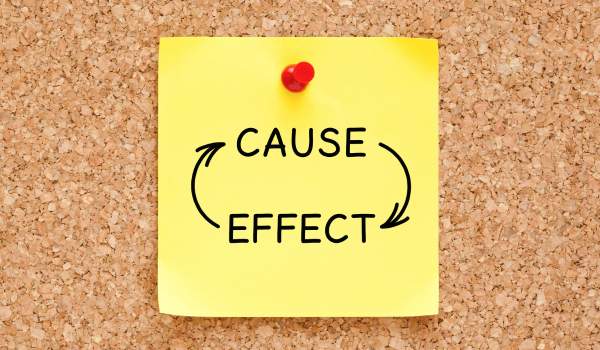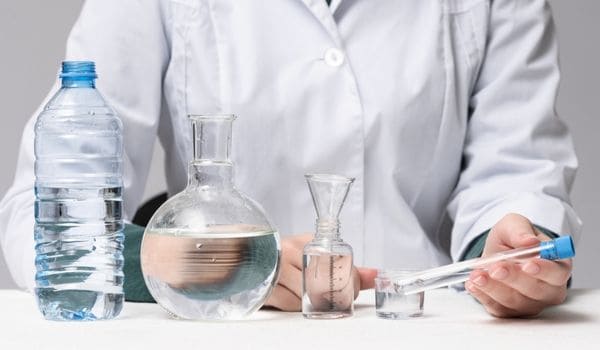Salt bridges are one of those sneaky softener problems that often go unnoticed — until your water starts feeling hard again.
They form when salt hardens into a crust inside your brine tank, creating a false layer that looks full… but underneath? Just water and air — no brine.
⚡ Quick Takeaway
- 🔍 What it is: A hard, crusty layer of salt that forms in the softener tank and blocks proper brine mixing
- 💧 Why it matters: Without brine, your system can’t regenerate — and you’ll start feeling the effects of hard water
- 🧼 Common causes: Overfilling, high humidity, or using low-quality salt
- 🛠️ Fixable? Totally — you just need a broom handle, some patience, and a quick reset
- ✅ Prevent it: Use high-purity salt, don’t overfill the tank, and control humidity in the space
🧪 Signs of Salt Bridging

Salt bridges can lurk for weeks before you notice something’s off. Here’s how to tell:
🚱 No Soft Water
If your water feels hard again, it could mean your system isn’t regenerating properly. Salt stuck in a crust can’t dissolve — and no brine means no regeneration.
🧂 Tank Always Looks Full
It’s a classic trick. The brine tank looks topped off, but it’s just a hardened layer with air or water underneath. Shine a flashlight in or poke around gently with a stick — if it feels solid near the top, that’s your culprit.
🌡️ What Causes It?

Salt bridges don’t usually show up out of nowhere — there’s often a combo of sneaky conditions that help them form:
- Too much salt Overfilling makes it harder for salt to dissolve, especially in wet tanks that always hold water. Crusting and even mushy sludge at the bottom can form if levels stay too high.
- Humidity Moist air is a bridge’s best friend. It causes salt pellets to clump together — a common issue for softeners in basements or garages. Dry brine tanks are especially vulnerable to this if salt isn’t fully submerged.
- Wrong salt type Low-grade or incompatible salts can contain debris or dissolve poorly, increasing the risk of clogs and crusts.
- Tank design Wet tanks = always full of water. Dry tanks = only fill during regeneration. Dry tanks can help avoid mushing, but they’re more likely to crust near the top if overfilled or exposed to humidity.
📌 Pro Tip: If you recently switched to a new softener and started noticing crusting, check if it uses a dry brine tank — you may need to adjust how (and when) you fill it. That’s where most salt bridges begin. likely to form crusts. In general, you get what you pay for.
🔧 How To Break Up a Salt Bridge

If your water softener’s gone quiet and your brine tank looks full but your water still feels hard — chances are you’ve got a salt bridge. The fix? Surprisingly easy.
Here’s how to break it up safely:
| Step | What to Do |
|---|---|
| 🛑 Turn off water | Use the bypass valve or shutoff at the main to stop water flow before starting. |
| 🔨 Break the crust | Gently tap the top layer of salt with a broom handle or mop. Don’t stab — just enough to collapse the bridge without cracking the tank. |
| 🧹 Scoop and clean | Remove loose salt with a plastic scoop. Then use a wet/dry vac or siphon to clear any standing water. |
| 🧂 Refill properly | Add fresh softener salt up to two-thirds full. Avoid overfilling — it’s a common salt bridge trigger. |
| ♻️ Regenerate | Turn the water back on and run a manual regeneration cycle to flush everything through. |
💡 Bonus tip: If it’s been a while since you last cleaned the tank, this is a great time to do a quick maintenance check. A clean tank = fewer future headaches.
🧼 How to Prevent Salt Bridges
Salt bridges might seem like a mystery, but with a few smart habits, they’re easy to avoid.
- 🧊 Seal the brine tank lid: Keeping the lid shut tight helps block out moisture and dust — both of which love to mess with your salt supply.
- 📦 Store salt the right way: Buying in bulk only works if the salt stays dry. A basic plastic bin with a lid works wonders for short-term storage.
- 🌟 Stick with high-quality salt: Bargain salt can bring unwanted extras like dirt and rock bits. Evaporated pellets dissolve cleaner and reduce the risk of clumping.
💡 Need help picking the right salt? Stick with evaporated pellets or high-purity options — they cost a little more, but they’re worth it in performance and peace of mind.
🧪 Test Your Water (If This Keeps Happening)

If you’ve cleared a salt bridge only to have it come back again and again, your water hardness might be part of the problem.
🔍 Even small differences in hardness levels can change how well salt dissolves — and whether it crusts up or clogs your brine tank.
💡 Pro Tip: A quick home water test can reveal if your levels are off — and point you to the right salt or system adjustments.
💭 Final Thoughts
Salt bridges can be a pain — but they’re one of the easier water softener problems to tackle once you know what to look for.
Whether your brine tank looks full but isn’t regenerating, or you’ve spotted signs of crusty buildup, a few simple steps can clear things up quickly. And better yet, with the right salt, proper storage, and a little routine maintenance, you can keep them from coming back.
If your system is older or giving you more trouble than it’s worth, you can explore softener options we’ve vetted if you’re thinking about upgrading.
Clean water, fewer surprises — and no salt crusts to battle next month.
 112 people found this helpful. Was this guide helpful to you?
112 people found this helpful. Was this guide helpful to you? 

